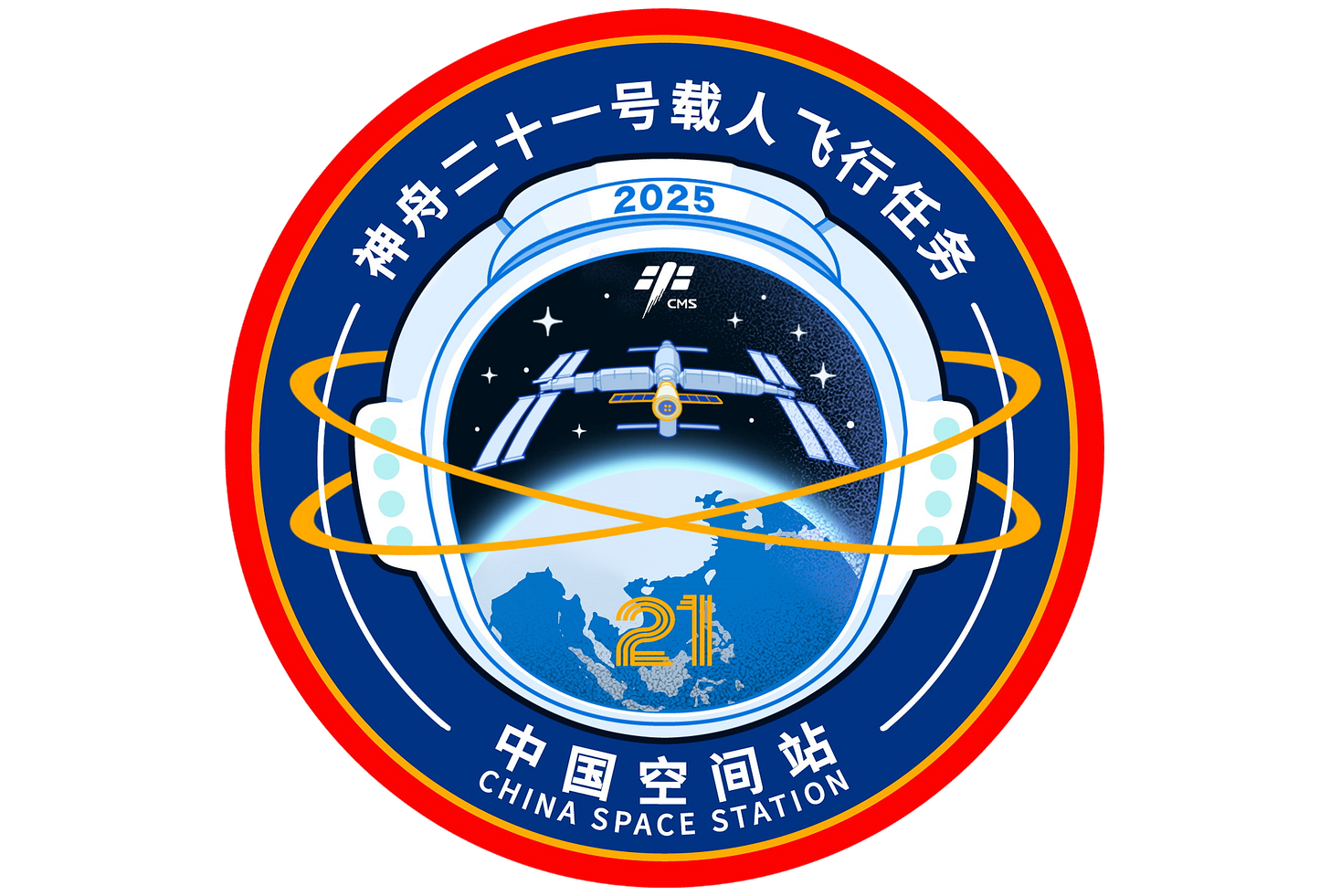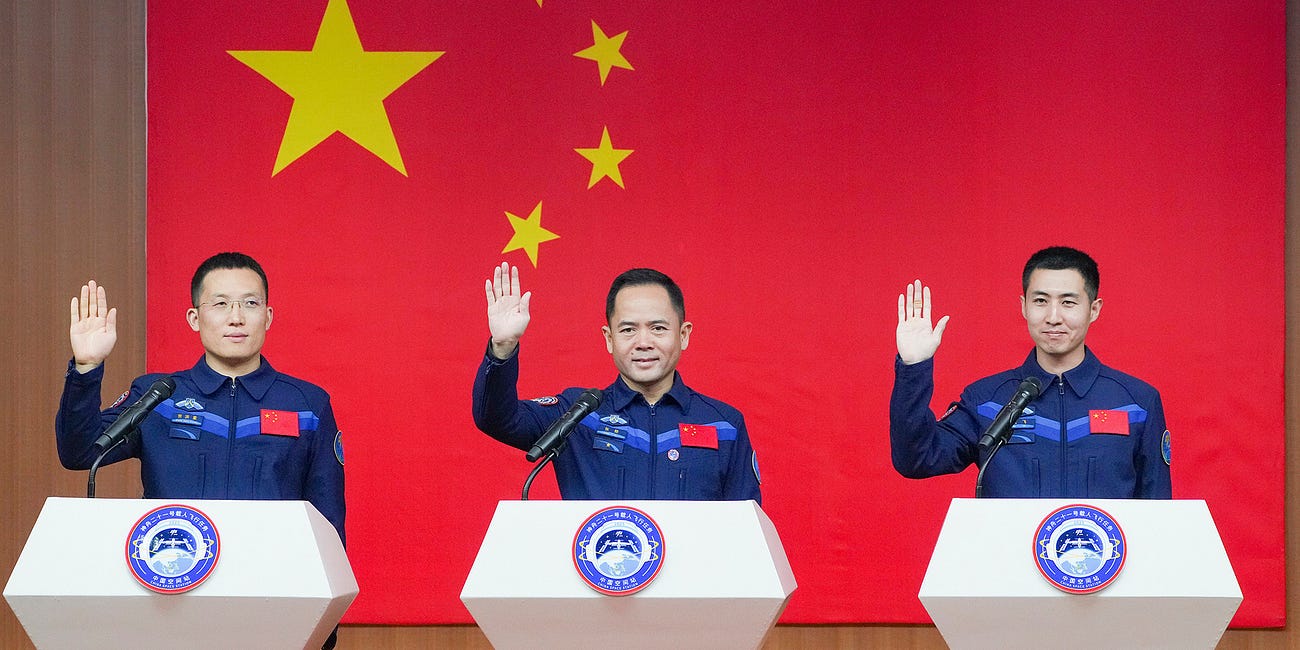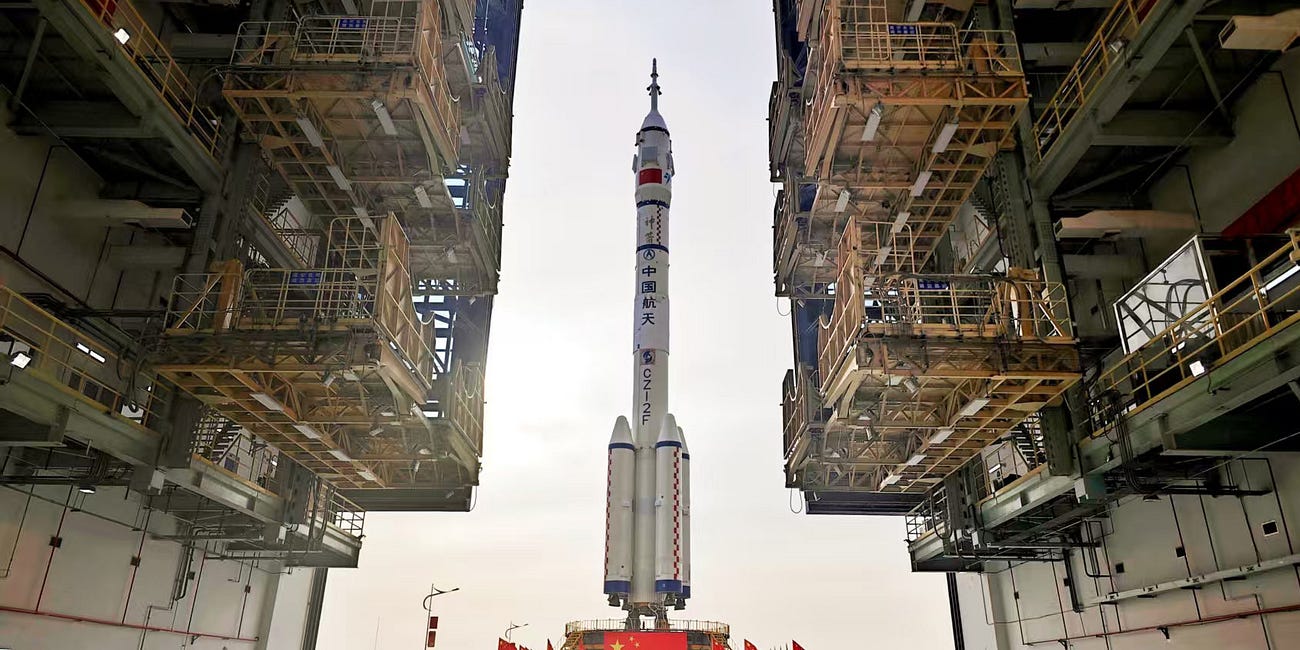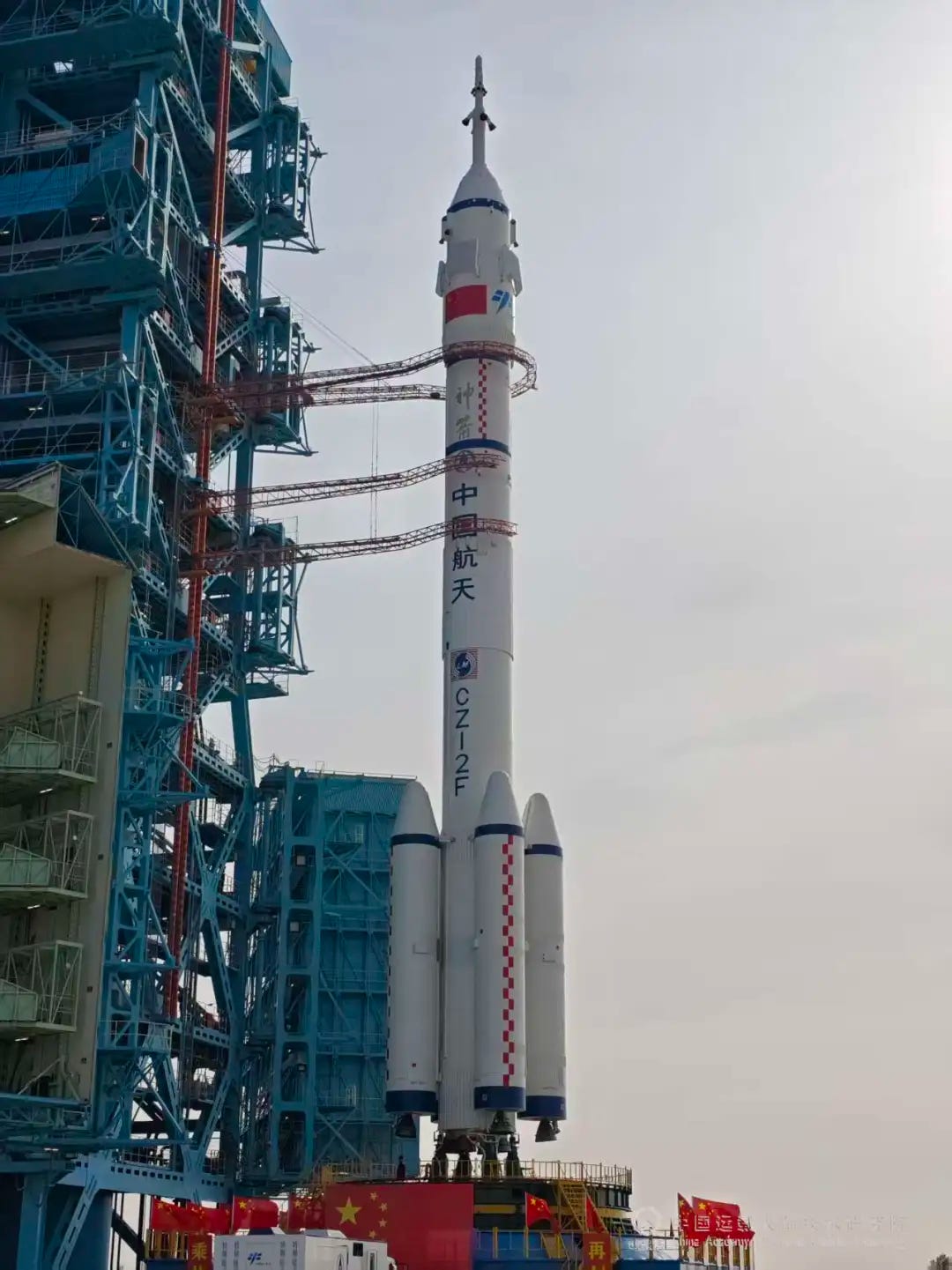Shenzhou-21 Successfully Strides Into Orbit! [Long March 2F/G Y21]
China has begun its latest mission to the Tiangong Space Station.

At 23:44 pm China Standard Time (15:44 pm Universal Coordinated Time) on October 31st, a Long March 2F/G lifted off from Launch Area 4 at the Jiuquan Satellite Launch Center carrying a Shenzhou spacecraft with three taikonauts onboard into low Earth orbit from a rendezvous towards the Tiangong Space Station.
Shortly after separating from the launch vehicle in low Earth orbit, the Shenzhou-21 spacecraft deployed its two solar panels to start generating electrical power. As of publication, the spacecraft is expected to dock with Tiangong about three and a half hours after launch, at the Tianhe module’s forward-facing port.
Retriving the newly launched taikonauts onboard Tiangong are the Shenzhou-20 trio of Commander Chen Dong (陈冬), Operator Chen Zhongrui (陈中瑞), and Science Operator Wang Jie (王杰). They have been on board since April 24th, about 190 days ago.
While onboard Tiangong for six months, the Shenzhou-21 crew is set to perform experiments in the fields of space life science and biotechnology, space medicine, space material science, microgravity fluid physics and combustion, and new space technology. One of those experiments will see Tiangong host its first rodent residents, with two male and two female mice being sent up to study their behaviours in microgravity before returning with Shenzhou-20 in a week. Spacewalks along the outside of the space station for hardware installation, maintenance, and inspections will also occur.
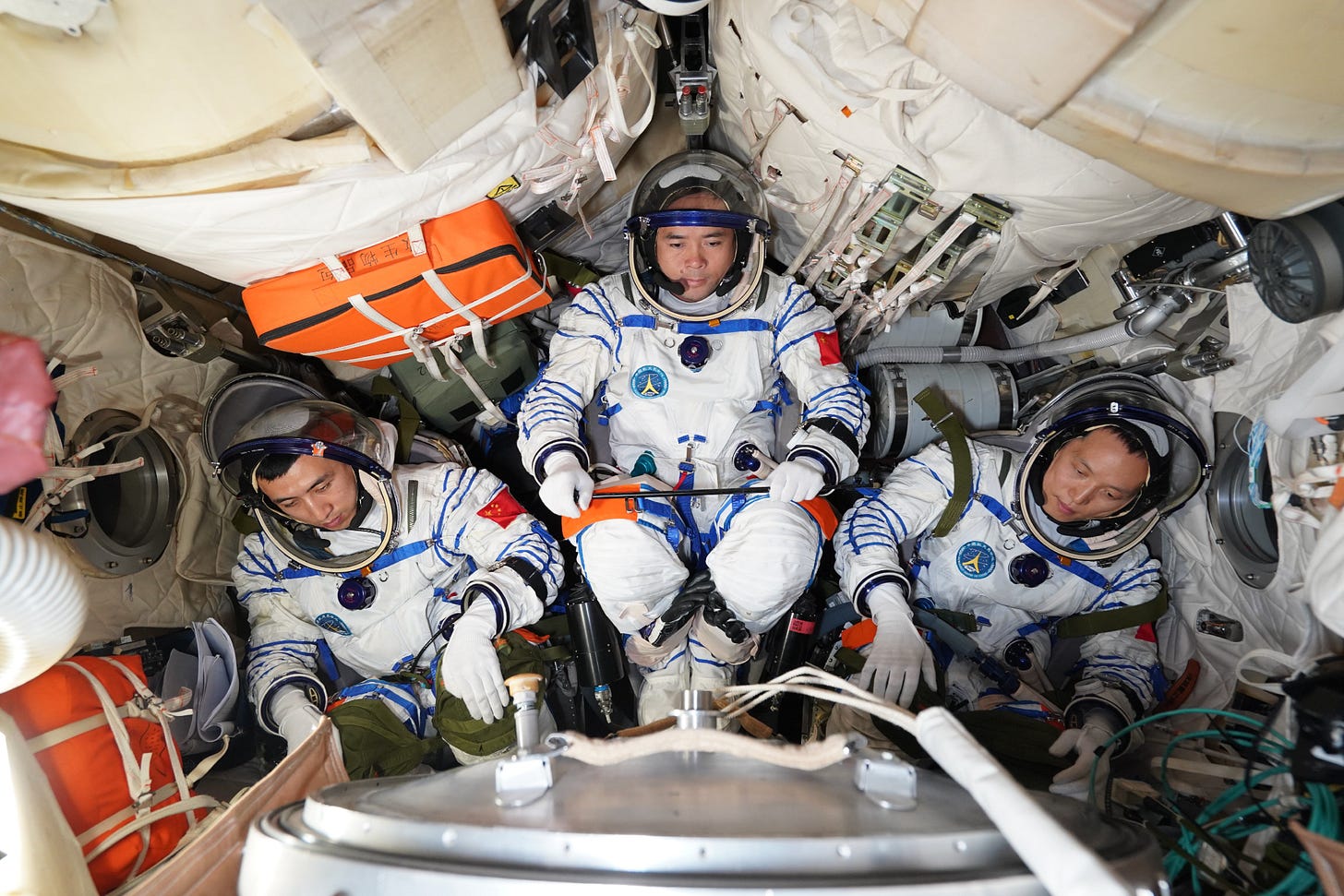
As announced on October 30th, three taikoanuts are being sent into space for the Shenzhou-21 mission. Zhang Lu (张陆) is the Commander and Pilot of the mission for his second spaceflight, having flown for the Shenzhou-15 mission between November 2022 and June 2023. He is from Hanshou County (汉寿县), Hunan (湖南) province, and was selected as part of China’s second taikonaut group in 2010, also being considered a ‘post-70s’ taikonaut having been born in November 1976.
Wu Fei (武飞) is the Flight Engineer for this mission, which will be his first trip into space. He is from Baotou (包头市 / ᠪᠤᠭᠤᠲᠤᠬᠣᠲᠠ), in the Inner Mongolia Autonomous Region (内蒙古自治区 / ᠥᠪᠥᠷ ᠮᠣᠩᠭᠣᠯ ᠤᠨ ᠤᠨᠥᠪᠡᠷᠲᠡᠭᠨ ᠵᠠᠰᠠᠬᠤ ᠣᠷᠣᠨ), and was selected as part of the third taikonaut group in October 2020, while being considered a ‘post-90s’ taikonaut having been born in 1993.
Zhang Hongzhang (张洪章) is the Payload Expert for this mission, with it being his first trip to space. He is from Binzhou (滨州市), Shandong (山东) province, and was also selected as part of the third taikonaut group in October 2020, while being considered a ‘post-80s’ taikonaut having been born in 1986.
Before the launch, planned tests, team drills, and launch rehearsals were completed following the Long March 2F/G’s rollout to the launch pad on October 24th. Participating in the pre-launch preparations were teams from the China Academy of Launch Vehicle Technology, the China Academy of Space Technology, and other entities under China Aerospace Science and Technology Corporation.
The Shenzhou-21 mission is the 21st flight of the Shenzhou vehicle, and the 34th for the human exploration program, including space station module launches and cargo spacecraft. It is also the 16th crewed mission from China.
Today’s launch was the 26th for the Long March 2F series, and the 604th launch of the Long March launch vehicle series. This was also the 68th launch from China in 2025.
Launch live stream replays via ThatSpaceDogeGuy and CGTN on YouTube.
Check out more about Shenzhou-21
Zhang Lu Will Lead Shenzhou-21 Mission to China's Tiangong Space Station
Ahead of the launch of the Shenzhou-21 mission to the Tiangong Space Station from the Jiuquan Satellite Launch Center in just over one day (October 31st, 15:44 Universal Coordinated Time liftoff), the China Manned Space …
Shenzhou-21 Crewed Mission Prepares for Launch
Recently, the China Manned Space Agency and other involved agencies and enterprises have rolled out the Long March 2F/G launch vehicle with the Shenzhou-21 spacecraft to the launch pad at the Jiuquan Satellite Launch Center on October 24th.
What is the Long March 2F?
This section is for those less familiar with China’s Long March series of launch vehicles.
The Long March 2F is the only human-rated launch vehicle currently active in China, with it developed by the China Academy of Launch Vehicle Technology. Two versions of the launch vehicle are currently active, the 2F/G and 2F/T. The Long March 2F/G launches the Shenzhou spacecraft, while the 2F/T launches China’s reusable spaceplane and did launch the first two Tiangong space stations. All versions of the Long March 2F have had the boosters, first, and second-stage burn Dinitrogen Tetroxide and Unsymmetrical Dimethylhydrazine.
The payload capacity of the launch vehicle is currently as follows:
8,400 kilograms to low Earth orbit
Powering the first-stage are four YF-20B engines generating a combined 332 tons of thrust, burning Dinitrogen Tetroxide and Unsymmetrical Dimethylhydrazine. Augmenting the thrust of the first-stage are four boosters, each powered by one YF-20B, each generating 83 tons of thrust each for a combined booster thrust of 332, while also burning Dinitrogen Tetroxide and Unsymmetrical Dimethylhydrazine. The combined thrust of the first-stage and four boosters is 664 tons of thrust. The second-stage of the vehicle is powered by one YF-24B generating 85 tons of thrust, once again burning Dinitrogen Tetroxide and Unsymmetrical Dimethylhydrazine.
On the launchpad, the Long March 2F is 62 meters tall, with the Shenzhou spacecraft’s launch escape system, and weighs 464,000 kilograms when fully fuelled. The first and second stages have a diameter of 3.35 meters, with the four boosters having a diameter of 2.3 meters, and the Shenzhou spacecraft’s protective fairing has a maximum diameter of 3.6 meters.
So far, the Long March 2F has only flown from the Jiuquan Satellite Launch Center, in the west of the Inner Mongolia Autonomous Region and the north of Gansu province.
What is the Shenzhou spacecraft?
The Shenzhou spacecraft is China’s only operational crewed spacecraft and is currently used to ferry its crews to and from the Tiangong space station. The spacecraft has a pressurized volume of almost fifteen cubic meters with a habitable volume of seven cubic meters. Currently, the Shenzhou spacecraft has a crew capacity of three.
Shenzhou consists of a service module, a re-entry module, and an orbital module. The only part of the spacecraft that the crew cannot access is the service module, which also houses the four main engines for performing in-space maneuvers. For generating power, the Shenzhou spacecraft has two solar wings with four panels each that are unfolded after launch, a rotating fixture also attaches them to the service module.

During launch and return to Earth, the crew is seated in the re-entry module. The re-entry module is the only part of the spacecraft that can survive the heat of re-entry and has parachute systems and a landing motor to safely land after return from space. Inside the module, the crew can take control of the spacecraft, access some of the cargo stored during launch and landing, and look out the windows from their seats.
The Shenzhou spacecraft currently launches on the Long March 2F/G rocket from the Jiuquan Satellite Launch Center. Each Shenzhou spacecraft has a believed launch weight of 8,100 kilograms and an in-space mass of 7,840 kilograms.



